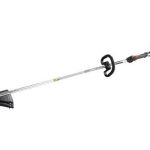If you are lucky enough to be acquiring a home early in its development process, then you may have more influence in the type of grass used for your lawn. There are basically two categories of grass types – Cool-Season Grasses and Warm-Season Grasses.
Cool-Season Grasses are ideal for the northern regions of the country where the climate is moist, the summers are warm and short and the winters are cold.
This category of grasses perform well in the cool weather of spring and fall at temperatures averaging 60° Fahrenheit to 75° Fahrenheit. As summer becomes warmer cool-season grasses grow slower and become more vulnerable to diseases. These grasses may also turn brown and completely dormant when the weather is dry and hot.
Proper watering is essential to keep cool season grasses green throughout the entire summer. In regions where the climate is hotter and where there are strict water limitations, the lawn may remain brown through the summer months. This is only a temporary condition. When the climate becomes cooler and the fall rains start, these dormant grasses will come back to appear lush and green. If you do not want a brown lawn during the summer months, then you would be better off with warm season grasses.
If you live in a region of the country that experiences a climate that is between cool and warm –- that is, the ground doesn’t freeze in the winter –- cool season grasses remain green throughout the winter.
In order to assure green grass in both the winter and summer, many lawn care experts suggest over seeding a warm-season lawn with cool-season grasses to assure a green lawn during the winter. To achieve this, experts advise that in the fall you evenly spread cool-season grass seed like fast-growing annual ryegrass over your warm season lawn. The ryegrass serves as a temporary green cover when it germinates and grows during the winter months. With the coming of the spring, the cool-season grass goes dormant and the warm-season grass turns green.
The most common cool-season grasses include bent grass, Kentucky bluegrass, fescues and ryegrass.
Often used on putting greens of golf courses, bent grass has a fine textured appearance that forms tightly knit turf. The Colonial bent grass of the specie does not need a whole lot of maintenance and it is not well suited for low mowing. This type of grass grows best in cool, high-rainfall climates like the Pacific Northwest. Bent grasses feature shallow roots and require
frequent watering and fertilizing. It is vulnerable to a wide range of diseases including brown patch, summer patch, dollar spot red thread, and pink and gray snow mold.
There are more than 200 variations of Kentucky bluegrass. Lawn care experts note that a decent amount of walking on this grass can result in moderate wear. So if you plan to enjoy activity on your lawn, then this particular type of grass may not be the best choice. Kentucky bluegrass has some problems in shade and periods of drought, but these issues can be minimized with mixing fescues or perennial ryegrass with it. Kentucky bluegrass typically has a high tolerance to cold temperatures. However, it needs plenty of water in areas where summers are dry.
The fine fescues family include four distinct varieties –- Cherwings, Red, Hard, and Tall. These grasses feature deep roots and fine, bristle-leafed plants that exhibit a medium green color. Although there are four varieties, the differences are indistinguishable to the untrained eye.








